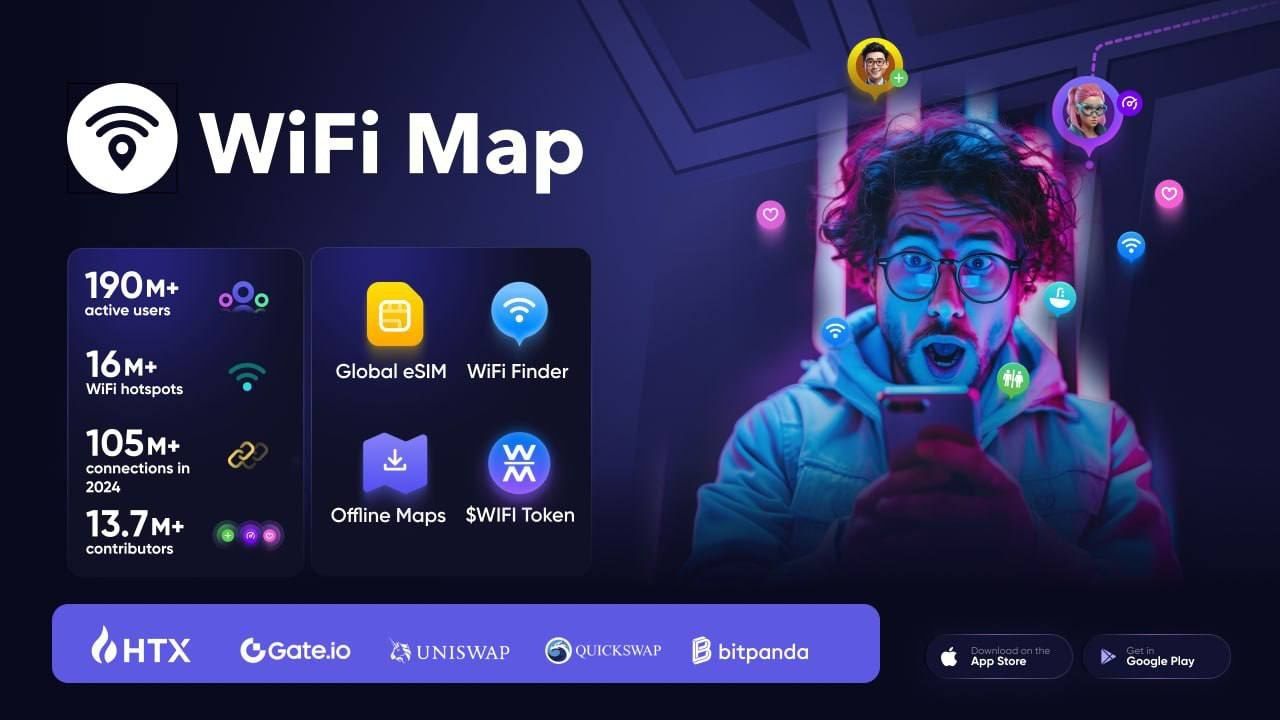WiFi Map, a leading decentralized physical infrastructure network (DePIN) company, has reached 190 million users globally, with the United States dominating with more than 50 million and India standing as the second-largest market.
This rapid growth shows the increasing adoption of decentralized wireless solutions and Web3-based services in the regions. The surge in WiFi Map’s adoption was significantly accelerated by its integration of blockchain technology.
(Source: WiFi Maps)
Further, in 2023, the company launched its Swiss-registered $WIFI token, a utility token built on the Polygon blockchain. This initiative enables users to earn rewards for contributing to the platform by adding new hotspots, verifying data, and conducting internet speed tests. As a result, nearly half of WiFi Map’s 13.5 million active contributors have received over 6 million $WIFI tokens as a reward, as per the data.
WiFi Map’s Growth and Community Impact
WiFi Map’s database now has over 16 million active WiFi hotspots, setting its position as one of the world’s largest and most comprehensive WiFi resources. According to the report, WiFi Map is available in over 125 countries and provides a unique opportunity for users to earn passive income through their contributions, making it a truly community-driven platform.
As WiFi Map celebrates its 10th anniversary this year, CEO and co-founder Denis Sklyarov highlighted the importance of the platform’s community in driving its growth.
“The strength of WiFi Map lies in its community. Together, we have built a platform that empowers people, enables connections, and unlocks opportunities. The contributions of our users have driven this growth and will continue to propel us forward.”
What began as a simple tool to find free WiFi hotspots has evolved into a comprehensive solution, offering eSIM services, offline maps, and a blockchain-based ecosystem. Moreover, WiFi Map is about to build a digital layer over the physical world in Metaverse with Real-World Assets and introduce “Hexagons and Megazones,” each with its own dedicated owners.
Disclaimer: This article is provided for informational purposes only. It is not offered or intended to be used as legal, tax, investment, financial, or other advice.
